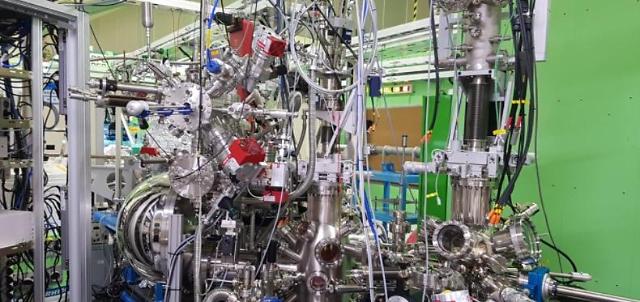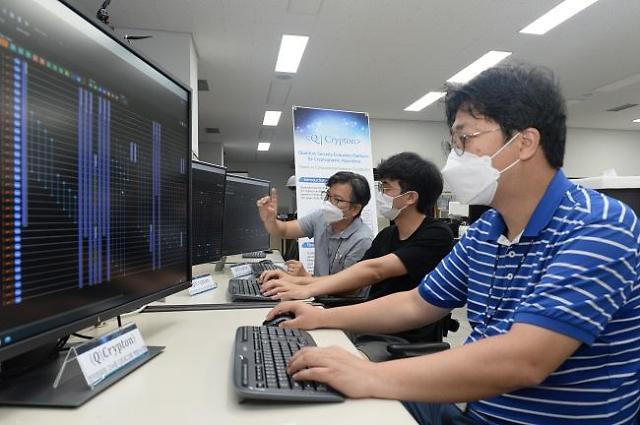
[Courtesy of the Ministry of Science and ICT]
SEOUL -- The electronic structure of liquid metals is a theoretical model devised in the late 1960s. However, no researcher has experimentally demonstrated their electronic structure. A South Korean research team has devised a unique method to understand the phenomenon and find a "pseudogap" in a crystalline insulator doped by disordered metals.
In a government-funded project, a research team led by Kim Keun-su, a professor of physics at Yonsei University in Seoul, has confirmed the electronic structure of liquid metals by spraying alkali metals over crystalline solids, the Ministry of Science and ICT said in a statement on August 5.
"We can explain the pseudogap with the impact of collisions with heterogeneous atoms arranged irregularly," Kim was quoted as saying. "High-temperature superconductivity will provide important clues to understanding the phenomenon."
Kim's team has identified the electronic structure of the interface between crystal solids and liquid metals. Alkali metals were sprayed on the surface of a crystalline solid called black phosphorus to find a pseudogap in a crystalline insulator doped by disordered metals using equipment that produces strong light.
A pseudogap describes a state where the Fermi surface of material possesses a partial energy gap. The term pseudogap was coined by Nevill Mott in 1968 to indicate a minimum in the density of states at the Fermi level. The Fermi surface is in reciprocal space which separates occupied from unoccupied electron states at zero temperature. Its shape is derived from the periodicity and symmetry of the crystalline lattice and from the occupation of electronic energy bands.
Basic scientific research has a wide range of ripple effects, although it takes a long time to put them into practical use, the ministry said, adding Kim's study would provide "important clues" to the identification of high-temperature superconducting mechanisms where electrical resistance becomes zero. High-temperature superconductivity is a phenomenon in which superconductivity is higher than 100K (173°C below zero)
"If the mechanism of high-temperature superconducting phenomenon is identified and the development of room-temperature superconducting is successful, electricity transportation without energy loss will be possible," the ministry said, suggesting that technological innovation could be made in the fields of medical diagnostic devices and magnetic levitation trains.
In a research paper published on the website of Nature, a scientific journal, Kim's team said the band structure connects the energy of electron waves to their wavenumber. "Even in phases of matter with only short-range order (liquid or amorphous solid), the coherent part of electron waves still has a band structure."
A conventional parabolic band structure of free electrons was found to bend back towards zero wavenumbers with a pseudogap of 30~240 millielectronvolts from the Fermi level, the team said. "This is wavenumber renormalization caused by resonance scattering, leading to the formation of quasi-bound states in the scattering potential of alkali-metal ions."
"Our results may provide a clue to the puzzling spectrum of various crystalline insulators doped by disordered dopants, such as the waterfall dispersion observed in copper oxides," the team said in its paper.
Copyright ⓒ Aju Press All rights reserved.




View more comments